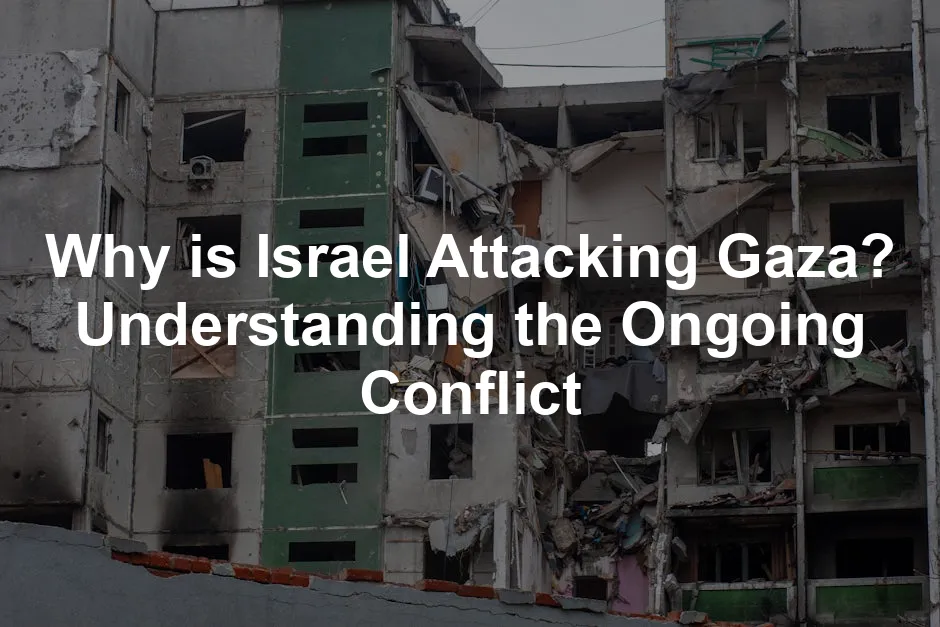
Why is Israel Attacking Gaza? Understanding the Ongoing Conflict
Introduction
Recently, the violence between Israel and Gaza escalated sharply. This conflict is complex, rooted in historical, political, and humanitarian issues. Understanding the reasons behind Israel’s attacks on Gaza requires a closer look at these various factors. If you’re interested in a comprehensive exploration of these themes, consider picking up “The Israel-Palestine Conflict: One Hundred Years of War” by James L. Gelvin. It’s a riveting read that will make you the life of the party (or at least the most informed).
Summary and Overview
The current situation is dire, with significant casualties on both sides. On October 7, 2023, Hamas launched a surprise attack on Israel. This attack resulted in the deaths of around 1,200 people and the capture of over 250 hostages. In response, Israel initiated a large-scale military operation against Hamas in Gaza, which has led to staggering casualties. Reports suggest that tens of thousands of Palestinians have died due to Israeli airstrikes.This cycle of violence has worsened an already critical humanitarian crisis in Gaza. The blockade and repeated military actions have left many civilians without basic necessities, leading to urgent calls for humanitarian aid and ceasefires. If you’re curious about the humanitarian implications of these events, “Understanding the Palestinian-Israeli Conflict: A Primer” by Phyllis Bennis is a must-read. It offers insights that can help you grasp the complexities of the situation. You can find it here.This attack has raised many questions about the motivations behind Hamas’s actions. To understand the implications of the October 7 assault, you can read more about it here.
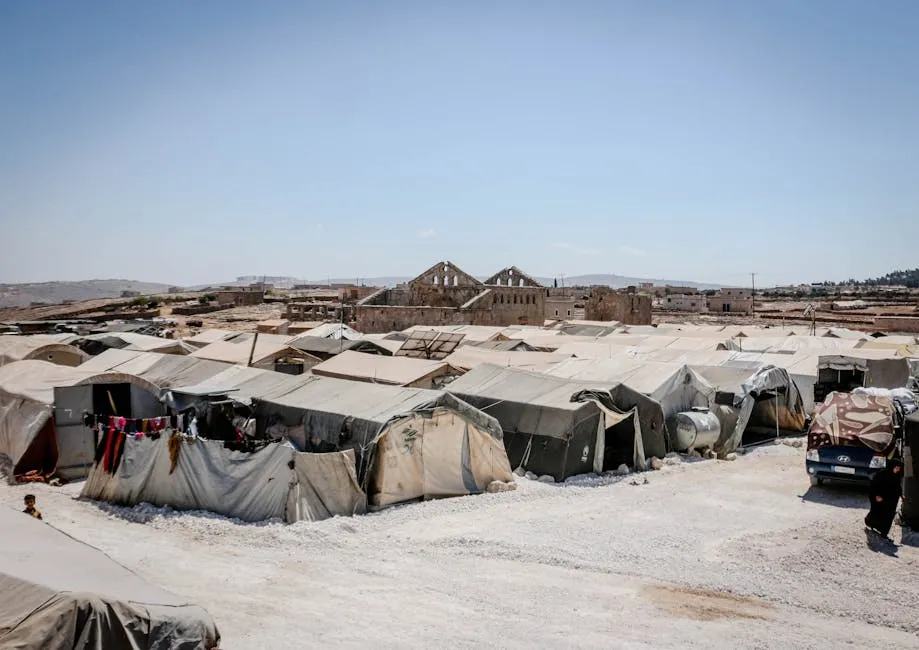
Historical Context of the Israel-Gaza Conflict
Overview of the Israel-Palestine Conflict
The roots of the Israel-Palestine conflict stretch back to 1948 when Israel was established. This event led to the displacement of hundreds of thousands of Palestinians, marking the Nakba, or “Catastrophe,” for many. The conflict has seen multiple wars, changes in territorial control, and a continuous struggle for statehood among Palestinians. To dive deeper into this history, “The Ethnic Cleansing of Palestine” by Ilan Pappé provides a critical perspective. You can grab your copy here.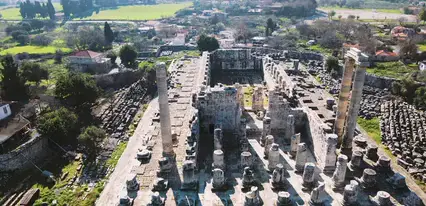
The Rise of Hamas
Hamas emerged in 1987 as a response to Israeli occupation. The group has governed Gaza since 2007, often clashing with Israel. It positions itself as the defender of Palestinian rights, gaining popular support amid frustrations over the situation in Gaza. If you want to understand Hamas’s perspective, “Hamas: A History from Within” by Azzam Tamimi is essential reading. You can find it here.
Blockade and Previous Conflicts
Since Hamas took control, Israel imposed a blockade on Gaza, restricting movement and goods. This has led to a humanitarian crisis, with many residents relying on international aid. Previous conflicts, including major military operations in 2008-09, 2012, and 2014, resulted in significant casualties and destruction in Gaza. If you’re interested in a detailed analysis of the blockade’s impact, “The Gaza Strip: The Political Economy of De-development” by Sara Roy is a compelling read. You can check it out here.
The Rise of Hamas
Hamas was founded in 1987 during the First Intifada. It began as a branch of the Muslim Brotherhood, focusing on Palestinian nationalism and Islamic principles. Over the years, Hamas gained popularity among Palestinians due to its social services, including education and healthcare. In 2006, Hamas won the Palestinian elections, leading to its governance of Gaza in 2007. Since then, it has often clashed with Israel, viewing itself as a defender of Palestinian rights. Its armed wing conducts military operations against Israeli targets, fueling ongoing tensions.Blockade and Previous Conflicts
In 2007, Israel imposed a blockade on Gaza in response to Hamas’s takeover. This blockade severely restricted the movement of goods and people, leading to a humanitarian crisis. Many Gazans rely on international aid for basic needs. Major conflicts followed, including Operation Cast Lead in 2008-2009 and Protective Edge in 2014. These operations resulted in significant casualties and destruction, further deepening the humanitarian crisis. Each conflict exacerbated the suffering of civilians, highlighting the urgent need for a resolution. If you want to understand the broader context, “The New Humanitarianism: A Guide to the New Humanitarianism in Gaza” is a great resource. You can find it here.
Reasons for the Recent Attacks
Hamas’s Motivations
The recent Hamas attack on October 7, 2023, stemmed from a mix of internal and external pressures. Economic hardship in Gaza has reached critical levels, with soaring unemployment and limited access to essential services. Over 70% of families depend on humanitarian aid. This dire situation has led to growing discontent among the population, pushing Hamas to act aggressively. The group aimed to regain support by demonstrating its military capabilities. If you want a deeper understanding of these dynamics, “The Gaza Conflict: A History” provides an insightful analysis. You can find it here.
Israeli Security Concerns
Israel sees Hamas as a significant security threat. The group’s military capabilities pose direct risks to Israeli civilians. Previous attacks have shaped Israel’s national security policy, leading to a more aggressive military stance. Following the October 7 attack, Israel launched extensive airstrikes in Gaza, aiming to dismantle Hamas’s infrastructure. The Israeli government argues that these measures are vital for national security. For a comprehensive overview of the historical context, “A History of the Israeli-Palestinian Conflict” by Mark Tessler is highly recommended. You can check it out here.
Immediate Triggers of the Current Conflict
The October 7 Attack
On October 7, 2023, Hamas launched a devastating and unprecedented attack on Israel. Militants infiltrated communities near the Gaza Strip, using a mix of ground assaults and aerial attacks. This operation led to the deaths of approximately 1,200 Israelis, marking the deadliest day for the nation since the Holocaust. In addition to the fatalities, over 250 individuals were taken hostage, escalating the crisis further.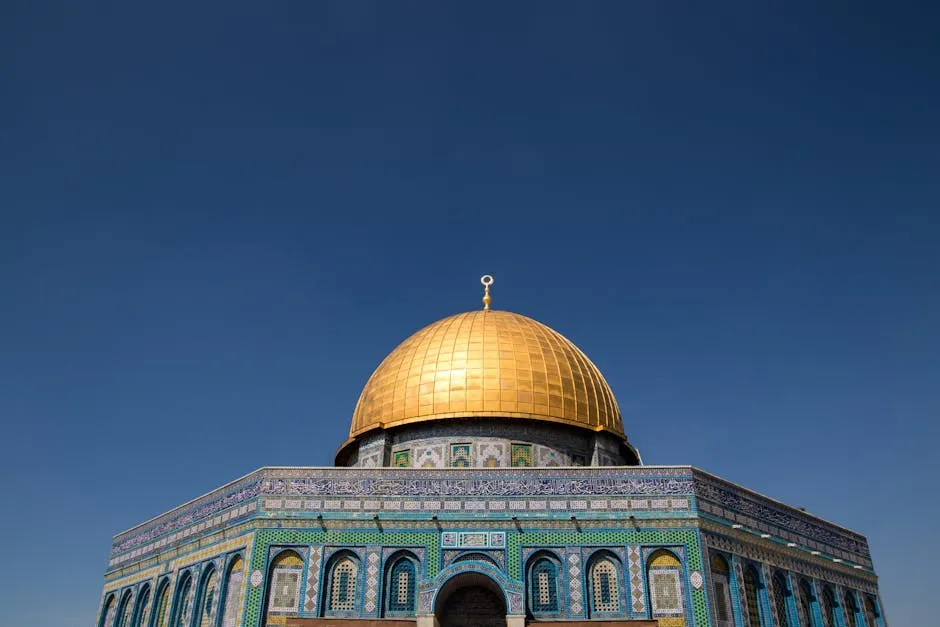
Israeli Military Response
In retaliation, Israel initiated a large-scale military offensive against Hamas in Gaza. This response included extensive airstrikes aimed at dismantling Hamas’s military infrastructure. Israel’s stated goals were clear: eliminate Hamas’s capabilities and recover hostages. The intensity of the operations led to significant destruction in Gaza, with numerous civilian casualties reported.
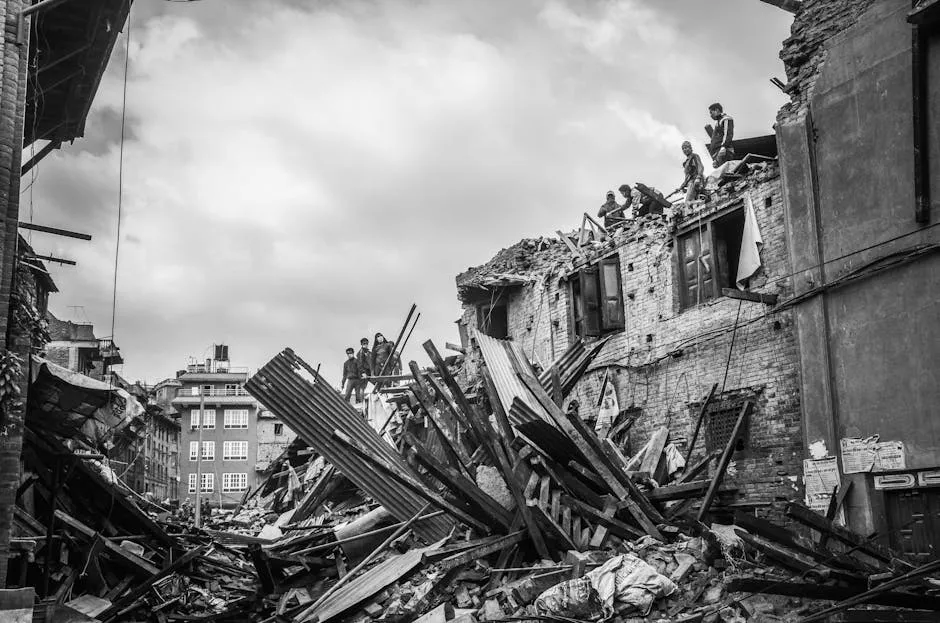
Humanitarian Impact of the Conflict
Access to Aid and Resources
Humanitarian organizations face numerous challenges in delivering aid to Gaza. The ongoing blockade severely restricts the flow of essential goods and services. With limited access, organizations struggle to provide food, medical supplies, and clean water. Checkpoints and military operations further complicate efforts. Aid workers often risk their safety while trying to reach those in desperate need. If you want to learn more about the humanitarian crisis, “Gaza: An Inquest into Its Martyrdom” by Norman Finkelstein provides critical insights. You can find it here.

International Reactions and Diplomatic Efforts
Global Reactions to the Conflict
The conflict has triggered widespread reactions from key international players. The United States has expressed strong support for Israel, emphasizing its right to defend itself. However, it also faces internal pressure to address the humanitarian crisis in Gaza. The European Union has called for immediate ceasefires and humanitarian access, urging all parties to prioritize civilian safety. For a deeper understanding of the international dynamics, “The Politics of the Israeli-Palestinian Conflict” by James L. Gelvin is a great read. You can find it here.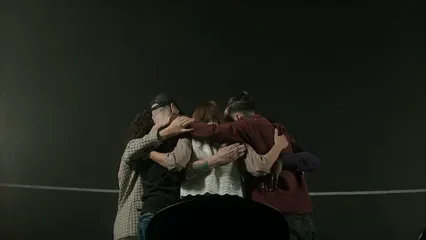
The Role of Media
Global media coverage plays a crucial role in shaping public perception of the conflict. News outlets often highlight the devastating impact on civilians, bringing attention to the humanitarian crisis. The narratives surrounding civilian casualties and military actions influence how people understand the conflict. Images and reports of destruction resonate deeply with audiences, prompting calls for action and support. If you’re interested in the media’s role in this narrative, “The Arab-Israeli Conflict: A History” by Ian J. Bickerton provides valuable insights. You can find it here.
Conclusion
In this article, we examined the recent escalation of violence between Israel and Gaza. The conflict intensified significantly after Hamas’s attack on October 7, 2023, resulting in tragic loss of life on both sides. Israel’s military response aimed to dismantle Hamas’s capabilities, leading to a humanitarian crisis in Gaza. The ongoing nature of this conflict remains alarming. Each cycle of violence deepens animosities and complicates the path to peace. Both sides face immense suffering, with civilians often caught in the crossfire. If you’re looking for a broader context on the Israeli-Palestinian conflict, “From Beirut to Jerusalem” by Thomas L. Friedman is a thought-provoking read. You can find it here. A sustainable resolution is essential. Addressing the humanitarian needs of those affected must be a priority. Lasting peace requires understanding, dialogue, and a commitment to human rights. As global citizens, we must advocate for solutions that promote dignity and safety for all involved.FAQs
What triggered the latest conflict between Israel and Gaza?
The latest conflict was triggered by Hamas’s surprise attack on Israel on October 7, 2023. This assault resulted in significant casualties and hostages, escalating tensions dramatically.
How has Hamas’s role evolved in the Palestinian territory?
Hamas has governed Gaza since 2007, positioning itself as the main political and military force. Its military strategies and governance approach have changed over time, reflecting internal and external pressures.
What are the humanitarian consequences of the conflict?
Civilians in Gaza face severe humanitarian challenges, including casualties, displacement, and lack of access to essential services. The ongoing violence exacerbates an already critical situation.
How does the international community respond to the Israel-Gaza conflict?
Responses vary widely. The U.S. typically supports Israel, while other nations call for ceasefires and humanitarian access. Global reactions reflect a complex mix of political interests and humanitarian concerns.
What are the historical roots of the Israel-Gaza conflict?
The conflict’s roots trace back to 1948 with the establishment of Israel, leading to ongoing territorial disputes and cycles of violence. Key events like the Nakba and subsequent wars shape the current dynamics.
What are the prospects for peace in the region?
Current diplomatic efforts face significant challenges. Without a clear path to negotiations, the prospects for lasting peace remain uncertain, highlighting the need for renewed commitment from all parties.
All images from Pexels




